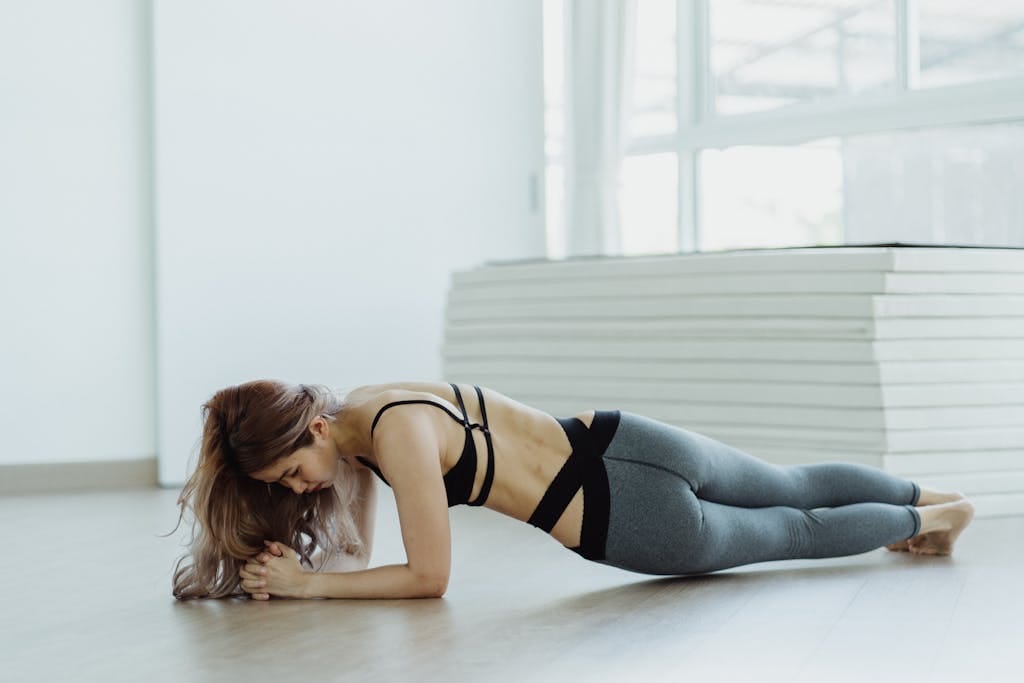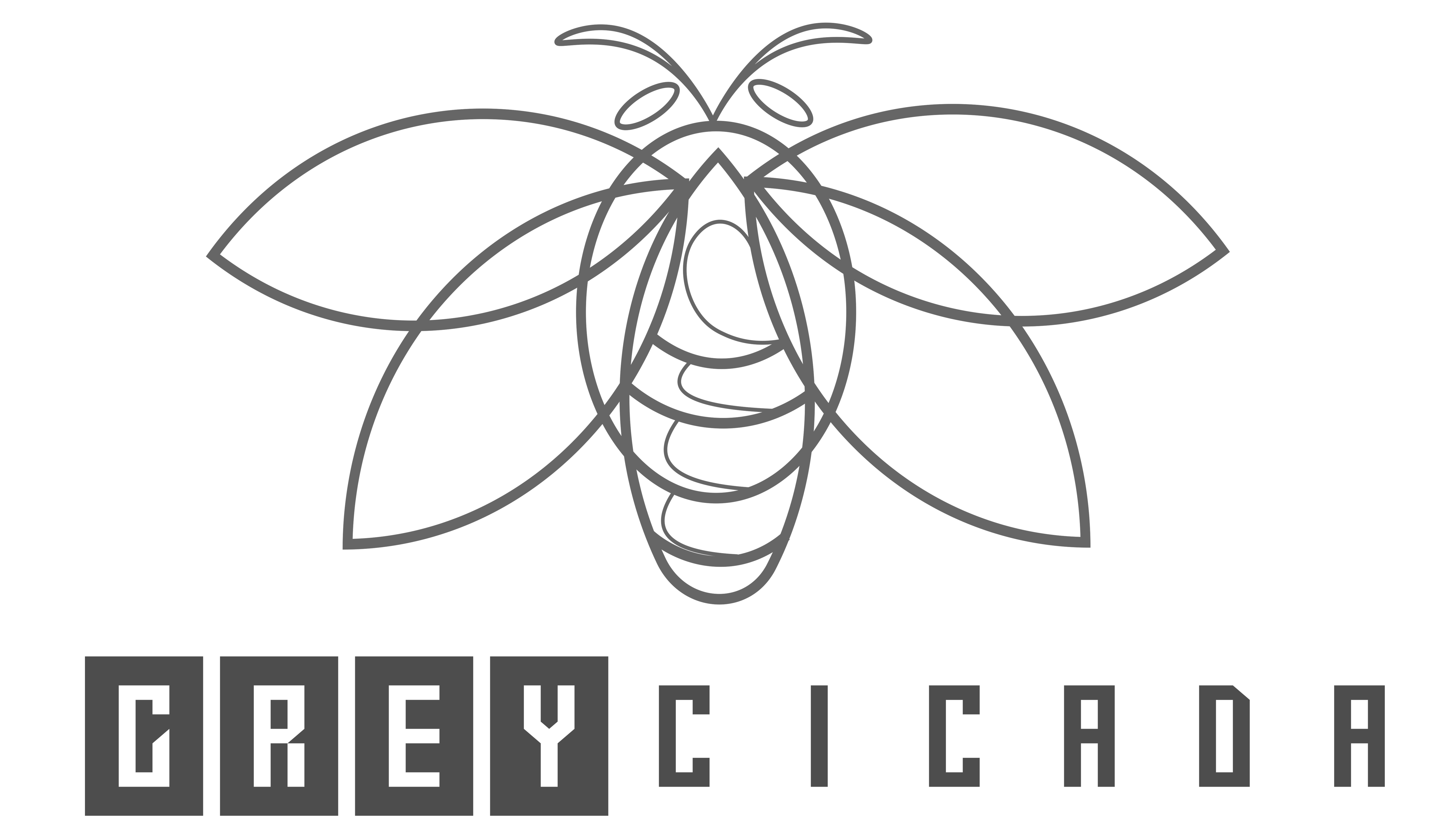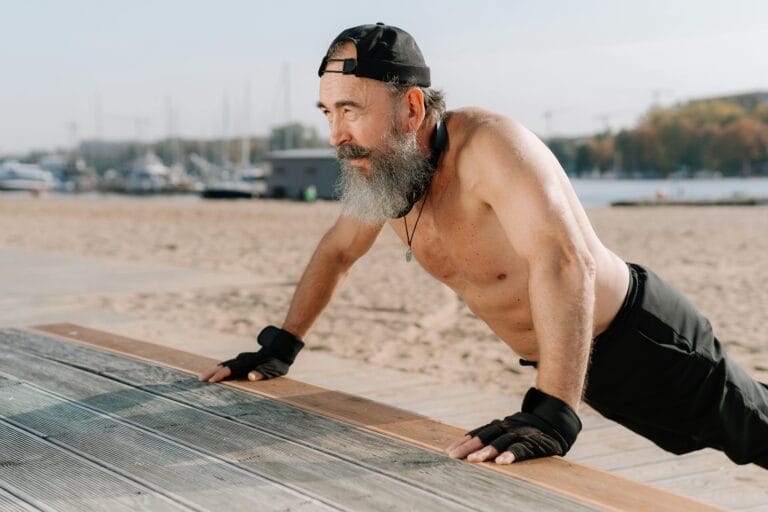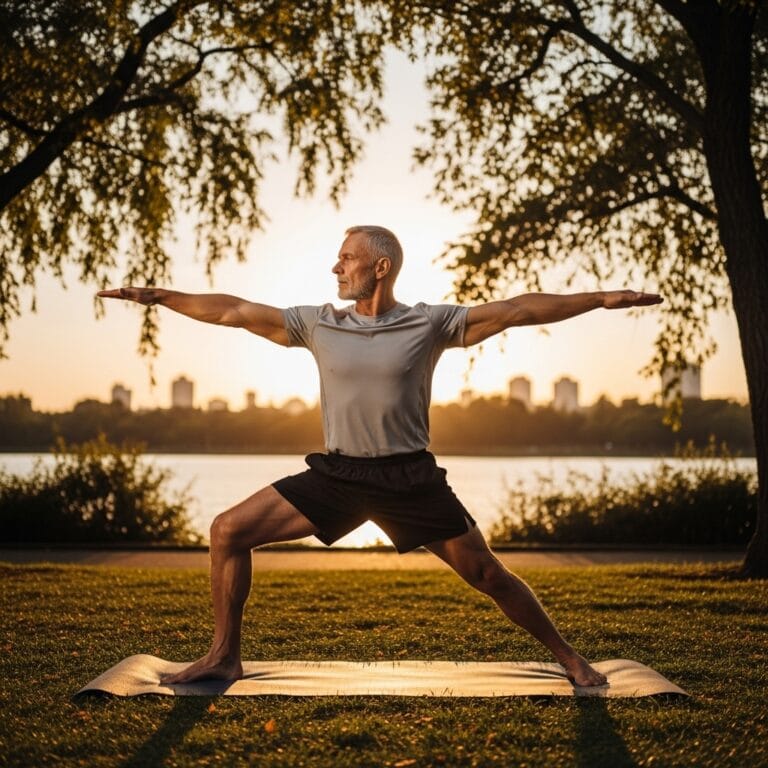FREE SHIPPING OVER $50
Stop Doing Planks! The 5 Bodyweight Moves That Guarantee a Smaller Waist After 40

If you are over 40 and consistently doing planks, you deserve credit for the commitment, but it’s time for a serious conversation about results. Many people assume that holding a rigid plank is the ultimate path to a smaller waist after 40, but here’s the tough truth: planks are highly effective for anterior core stability, yet they largely fail to engage the specific muscles that cinch your middle and actively shrink your waist size. As our bodies shift metabolically after the age of 40—often storing more fat around the midsection and relying more on functional strength—your workout needs to evolve beyond static holds. You need dynamic, rotational movements that recruit the deep, forgotten core muscles designed to act like a natural corset.
The good news is that achieving a flatter, tighter core doesn’t require complex machines or endless gym time. It requires smart, targeted movement. We are going to retire the standard plank and replace it with five superior, highly efficient bodyweight moves that actively force your torso to stabilize, rotate, and flex. These moves go far beyond simple static endurance; they train your body to pull your waist in and stabilize your spine during real-world movement. When executed correctly and consistently, these exercises deliver the measurable results you’re looking for, making them a far better use of your precious workout time.
Why Static Planks Fall Short for Waist Shrinkage
The common plank focuses primarily on the rectus abdominis (the “six-pack” muscle) and hip flexors. While this builds valuable strength in the front of your body, it misses the mark when your goal is reducing your waist circumference. After the age of 40, we need to focus on two things: engaging the deep stabilizing muscles and incorporating movement that accelerates the metabolic burn.
First, static holds do not effectively train the transverse abdominis (TA)—the deep, internal muscle that wraps around your middle like a supportive weight belt. The TA is the key to drawing your abdomen inward and reducing the appearance of your waistline. You engage the TA best through movements that require anti-rotation and anti-extension, not just holding still. Second, as our metabolism naturally begins to slow, static exercises simply don’t generate the same caloric expenditure or functional strength benefits as dynamic movements. You need moves that get you moving, require coordination, and challenge your body in multiple planes of motion to truly fire up your core and create that sculpted look.
Activating Your Internal Corset: The Key to a Smaller Waist
To genuinely shrink your waist size, we must prioritize the muscles responsible for compression and rotation. This means targeting the Transverse Abdominis (TA) and the obliques (internal and external) which run along the sides of your core. These five moves are specifically chosen because they demand full-spectrum core activation—bracing, rotating, and extending—which trains the deep muscles far more effectively than any plank variation.
1. The Dynamic Side Plank with Hip Dip
The traditional side plank is a step up from the frontal plank, but we can make it even better by adding movement. The Dynamic Side Plank with Hip Dip targets the external and internal obliques intensely, working them through a challenging range of motion. This is the definition of functional core strength.
- How it Works: You start in a standard side plank position: forearm on the ground, shoulder stacked directly over the elbow, and feet stacked. From there, actively lower your hip toward the floor, tapping the ground if possible, before squeezing your obliques to lift your hip back up higher than the starting position. You are forcing the obliques to contract and shorten against gravity.
- Why It Beats Planks: This move is dynamic and forces your side core muscles to contract and relax under load. This repeated eccentric and concentric work is what builds muscle density and sculpts the lateral line of your waist, leading directly to a smaller waist after 40.
2. The Dead Bug (The Anti-Extension Master)
The Dead Bug is one of the most underrated bodyweight moves for core health. It looks deceptively simple, but it is a masterclass in engaging the transverse abdominis and anti-extension. Your goal here is not to flex your abs, but to prevent your lower back from arching.
- How it Works: Lie on your back with your knees bent at 90 degrees and arms extended toward the ceiling. Press your lower back firmly into the floor—this is the constant non-negotiable part. Slowly extend one arm back overhead and the opposite leg straight out, hovering them both just above the floor. Return to the start and switch sides. Focus on controlled, slow movement while keeping your back glued to the mat.
- Why It Beats Planks: The Dead Bug directly trains the TA and the deep spinal stabilizers to resist the urge of your spine to extend, which happens constantly in daily life. This is the deep core activation necessary for excellent posture and internal abdominal compression—the true recipe for a flat, stable core.
3. Bicycle Crunches (The Rotational Powerhouse)
When performed slowly and with control, the Bicycle Crunch is arguably the best bodyweight rotational move available. It aggressively targets both the internal and external obliques simultaneously while also hitting the rectus abdominis.
- How it Works: Lie on your back, hands gently behind your head (don’t pull on your neck). Bring your knees up and hover your feet. Draw your right elbow toward your left knee while extending your right leg straight. Pause briefly to feel the squeeze in your side. Then, smoothly switch, bringing your left elbow toward your right knee. Focus on bringing your shoulder across, not just your elbow.
- Why It Beats Planks: Unlike a static plank, the bicycle crunch requires dynamic rotation—the movement pattern essential for daily function and sports. Rotation is a powerful way to define and tighten the obliques, carving out the sides of your core and delivering the visual appearance of a smaller waist after 40.
4. Bird-Dog (The 360-Degree Stabilizer)
The Bird-Dog exercise is a foundational functional fitness movement. It trains the entire core, from front to back, to maintain a neutral, stable spine during limb movement. This is a critical skill for everyday activities like carrying groceries or lifting weights.
- How it Works: Start on your hands and knees, ensuring your back is flat (neutral spine). Brace your core tightly as if preparing for a punch. Slowly extend one arm straight forward and the opposite leg straight back, ensuring both remain parallel to the floor—avoid lifting the leg too high, which causes hip rotation. Hold the extension briefly, then return to the start with control. Switch sides.
- Why It Beats Planks: Planks are static; the Bird-Dog challenges your core stability dynamically. It strengthens the entire deep core system (including the smaller muscles along your spine) to fight rotation and extension, dramatically improving posture. Better posture instantly makes your waist look smaller and prevents the low-back pain common in the over-40 crowd.
5. Standing Cross-Body Knee-to-Elbow
While ground work is powerful, incorporating standing exercises into your bodyweight moves routine provides the best functional strength payoff. The Standing Cross-Body Knee-to-Elbow is a powerful metabolic booster that forces you to rotate while balancing.
- How it Works: Stand tall with your feet shoulder-width apart, hands behind your head. Lift your right knee up and across your body toward your left elbow, actively crunching your obliques together. Do not simply bend over; rotate your torso. Return to the start and repeat on the opposite side. Aim for a quick, rhythmic movement to engage your core and elevate your heart rate.
- Why It Beats Planks: This move is a metabolic accelerator that requires balance and rotation, exactly what the mid-section needs. It trains the core to work as it does in real life—dynamically and while standing—and because it’s a high-rep, dynamic movement, it helps burn more calories than a static plank, aiding in the reduction of visceral fat that contributes to a larger waistline.
Building Your High-Impact Core Routine
Implementing these five bodyweight moves consistently is the secret to guaranteed results. Remember, your goal is quality over quantity, especially when focusing on core strength after 40.
The Anti-Plank Protocol:
- Frequency: Perform this routine 3 to 4 times per week, allowing for a rest day in between sessions.
- Sets and Reps:
- Dead Bug: 3 sets of 10 repetitions per side (slow and controlled).
- Bird-Dog: 3 sets of 10 repetitions per side (focus on stability).
- Dynamic Side Plank with Hip Dip: 3 sets of 15 repetitions per side.
- Bicycle Crunches: 3 sets of 20 repetitions per side (40 total).
- Standing Cross-Body Knee-to-Elbow: 3 sets of 25 repetitions per side (50 total, focus on speed).
Final Thoughts
By replacing the static inefficiency of the traditional plank with this dynamic, keyword-rich selection of bodyweight moves, you directly address the core’s functional needs after 40. You are not just building muscle endurance; you are building a resilient, stable, and—most importantly—visibly smaller waist. Start this routine today, and watch your core respond with a powerful transformation.
Related Articles
- Pilates Trainer Drops Her Go-To 5-Minute Core Workout—And It’s All About the Weights
- This Bodyweight Move Builds a Stronger Backside Than Deadlifts—And Boosts Flexibility Too
- These 5 Pelvic Floor Exercises Can Transform Your Core, Bladder, and Bedroom—And Most Men Have No Idea
- Want Bigger Glutes and Quads? Science Reveals the Exact Rep Ranges That Actually Work
- This 12-Minute Yoga Routine Reverses Bone Loss Better Than Walking—Doctors Are Stunned



